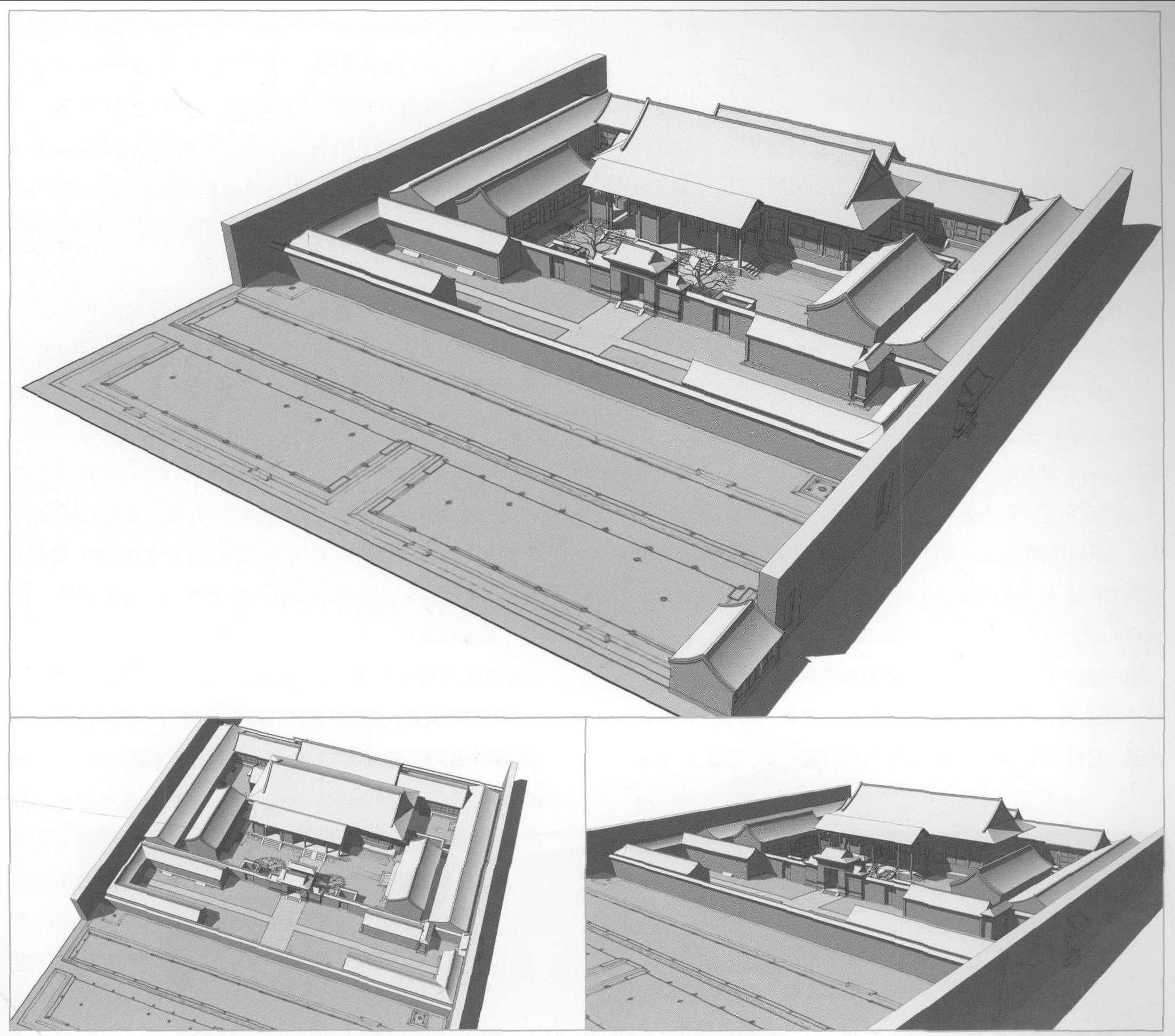
From Classroom, to Gallery, Library, Lab and Office
by Zishi Li
[dropcap]I[/dropcap]n 1668, a French Jesuit named Jean-François Gerbillon came to China to convert people to Christianity, yet ended up teaching Emperor Kangxi math and geometry in the Forbidden City. In his journal, Gerbillon faithfully recorded Kangxi’s interest in science from the west, including astronomy, geology, languages, music and medicine. Apart from the traditional glorious palaces, Kangxi was in need of private spaces as his classroom, lab and studio. The Hall of Mental Cultivation was the perfect match because of its symmetrical form and convenient location. The west wing contains Kangxi’s dining room, classroom and reading room, while the east wing functions as the studio for the artisans to produce utensils and scientific instruments, such as balances, funnels and telescopes. From Emperor Kangxi to his grandson Emperor Qianlong, the plan of the Hall of Mental Cultivation has been altered and subdivided many times to meet the emperor’s needs.
After Kangxi’s reign, his son Yongzheng moved his office to the Hall of Mental Cultivation. To make the room seem more formal, he arranged a throne and a large wooden plaque in the main palace. Yongzheng also made the most of the extant division of the main hall, which comprises three large rooms subdivided into nine small rooms, directly linking the main hall to the bungalows in the back. Yongzheng stuffed these small rooms with books, documents, paintings and small Buddha shrines. Given the limited size of each room, the interior arrangement makes the Hall of Mental Cultivation look delicate and diversified at the same time. The arrangement of the main hall was soon duplicated in the offices built in the Summer Palace and the Old Summer Palace.
When Qianlong became the emperor in 1736, the first alteration he made for the Hall of Mental Cultivation was to transform the west pavilion into a study room titled Changchun, meaning “forever spring”. The room was decorated with landscape paintings of the well-known Italian Jesuit court painter, Giuseppe Castiglione, or Lang Shining. Coming to China with the hope of propagating Christianity, he served as a court painter since Kangxi’s years due to the suppression of western religion during the Qing Dynasty. Castiglione infused western painting style with Chinese painting techniques by lavishly coloring, adding shadows to the objects, and developing perspectives in negative spaces. He painted on large sheets of silk, which were later glued onto the walls as a means to exaggerate the room’s depth. However, the room only lasted for eleven years, later turning into a Buddha temple to accommodate Qianlong’s sudden obsession with Buddhism as a mental catharsis. All the previous paintings and decorations were removed and replaced by a pagoda made of rosewood. The pagoda almost touches the highest point of the ceiling, surrounded by a scroll of Thangka painting from Tibet. As the sunlight leaped onto the Thangka from the meticulously carved hollows on the windows, the fresh colors and vivid figures of Buddha imparted a sense of veneration to the viewers.
After Qianlong’s death, the power of Qing Dynasty started to decay. In 1840, the Forbidden City’s architecture was in such poor condition that the Emperor Daoguang had to call for a thorough renovation. The Hall of Mental Cultivation was especially suffering from the lack of preservation with the cracked ceilings, spoiled decorations and split windowpanes. The repair greatly modified the plan of the Hall of Mental Cultivation, including removing the delicate niches in the east wing when discarding the perished doors and screens. The central space was thus broadened with a bed directly facing the entrance. As a result, the Empress Cixi made the most of this arrangement, sitting on the bed behind the curtain to listen to the chancellor’s’ report. Cixi’s son, Emperor Tongzhi tried to expand the size of the Hall of Mental Cultivation by removing the back walls of the east and west wings. Interpreting this move as Tongzhi’s ploy to show his authority, Cixi and the chancellors promptly rejected his plan.
Despite undergoing changes for over three centuries, the Hall of Mental Cultivation has always contained more open spaces in the front and subdivided rooms in the back. The emperor thus received the chancellors and guests in the front, while resting in the delicate multi-purpose rooms toward the back. During feudal regimes, such settings reinforced the public image of the emperor as the son of the gods by shrouding his private life in a mist. The Hall of Mental Cultivation therefore remains a major tourist attraction in the Forbidden City — hundreds of people flood in every day, peeking over others’ shoulders at where the emperor once lived in seclusion.
Zishi is a sophomore in Branford College. Contact her at zishi.li@yale.edu.

